Reading about the principles of tai chi chuan is often fascinating and the deep degree of thinking that went into creating the forms and tying them back to life can awe-inspiring. The best of all of the tai chi principles are the ones that a bit less esoteric where we can immediately see how to apply them to improve our form and hopefully influence our life outside of class.
The number nine is one of the most significant tai chi principles because it can define the number of movements we do, the number or rotations we make, and most importantly how we connect the outer movements of the body with the initiating energy in our core or center.
This essay is a compilation of notes taken in an interview with Chen Youze, 20th generation Grand Master in Chen Tai Chi. Chen Youze is a consummate teacher. As his student, you are simultaneously blown away by the level of development that he has achieved in his lifetime and warmed by the fact that he has the ability to convey his knowledge and enable you to progress. He is typically very direct but on this unique occasion he spoke along more esoteric lines employing math and angles to teach basic principles of tai chi
Let’s begin by exploring how the number nine shows up in shapes and directions and then how it relates to our bodies.
The Importance of Nine to Tai Chi Principles and Philosophy
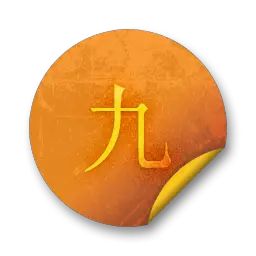
Nine is the highest single-digit number and stands for completeness and eternity. It also has historical significance. Nine Continents described the large territory of an empire, emperors wore nine-dragon imperial robes, and constructed nine-dragon walls. Nine is considered whole and has a special relationship with all angles, relationships and divisions.
Integrated movement
Our goal in tai chi is to be able to move in an entirely connected manner. Learning the movements of a form can be easy but figuring out how to integrate all parts of the body in each movement is where the work and rewards begin. The number nine enables us to see how any small movement or division of movements always relate to the whole. It also give us a way to subdivide any of the other tai chi philosophy and principles to better understand them.
360 degrees (3+6+0 = 9)
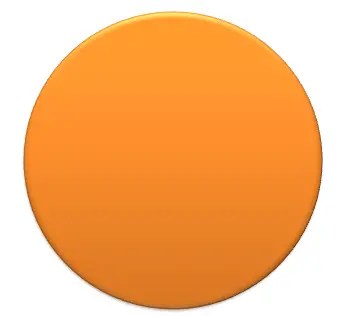
Wuji, as in wuji standing is a state of emptiness. It is a single point in space and there is no polarity. Standing without moving is the easiest way to experience being fully integrated but we then have to maintain the integration as we begin to move. Understanding wuji is fundamental to understanding all tai chi principles. Think of wuji as that central warm, calm place that is so enjoyable and that we are always trying to get to. Tai-ji (vs. wuji) is any initiating energy or energy in motion and what we are interacting with during the form. We want to maintain that calm center in all of our movements.
180 degrees (1+8+0 = 9)
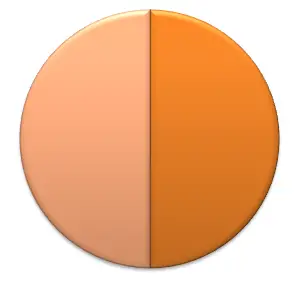
The splitting of the whole refers to the dualism of heaven/earth, light/dark, soft/hard, etc. These are the polar ends of everything and form the words that we use to describe or experience. The second that we move away from a centered state we are traveling in one of these directions. The goal is to be conscious of the shift and work to not over compensate in any direction.
Yin Yang 180 degrees (1+8+0 = 9)
Yes, the Yin-Yang symbol of tai chi represents this polarity. In life, we have two conflicting forces that need to be addressed in order to maintain balance.
90 degrees (9+0 = 9)
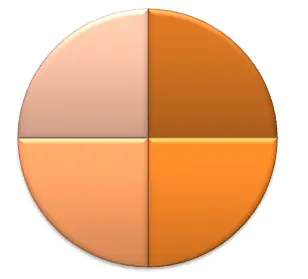
By dividing the polar ends into fourths we have the first independent meaning. The four seasons and the four cardinal directions describe categories that are related yet very distinct. These four sections represent the first true movement in advancing, retreating or sidestepping. We want to arrive wherever we are going with as much stability as possible and a continual goal of returning to a centered state.
45 degrees (4+5 = 9)
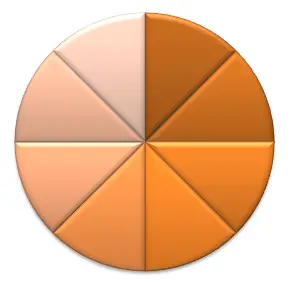
Further dividing the 4 areas we have our first combinations. Each section is normally described by how it differs from adjacent pie pieces. On the martial side of things, these are the angles of attack and the manipulation of joints at these smaller angles give us the torque and tactical advantage to control another body.
22.5 degrees (2+2+5 = 9)
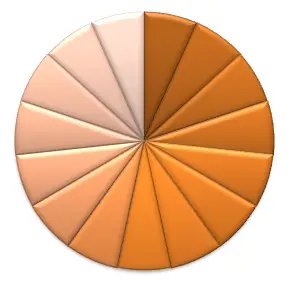
Further dividing into smaller angles exposes the intricate movements of higher skill levels. The truth is that most of our daily movements are incredibly intricate and fine. We reach for an object, adjust our hand and pressure, and then adjust our stance depending on the object’s weight. Are we letting our posture and gravity do most of the work or is their tension in our shoulder and throughout the body? In the tai chi classroom we focus on large, more defined angles but our hope is that our balance infiltrates our entire day.
11.25 degrees (1+1+2+5 = 9)
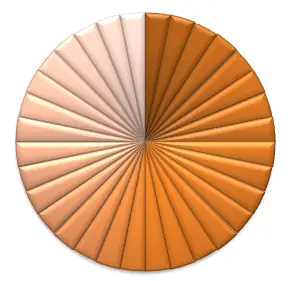
11.25 degrees is the maximum number of times you want to divide a whole object. Smaller angles are too tiny to manage if we want to guarantee that our body is positioned optimally. The armpit spacing is a great example from the tai chi form. The arm rotates in every direction but we would never want it completely closed. 11.25 degrees would be the arm at rest in the opening movement but without the armpit clamped shut.
Yes this is esoteric. However, it provides a great way to discuss how the sum of all movements relate to the whole.

The 9 Sections of the Human Body
Chinese symbolism has long been used to try to better describe some of the complex ideas behind tai chi but it doesn’t always have to be esoteric. The body can be described by the relationship of all of its parts to the ground and Chen Youze used a rocket as a metaphor to describe how the sections should interact/articulate under force and movement.
Fired from the bottom upon launch, each section of the rocket has to be aligned with the one below it or it will not be able to take the force and transmit the energy along its frame. Tai chi emphasizes this type of connectedness and relaxation so that the weight of the body or pressure from an opponent can transferred through each section to the ground.
- The ground/floor and the foot
- The foot to the ankle
- The ankle to the knee
- The knee to the hip
- The hip to the waist
- The waist to the shoulder
- The shoulder to the elbow
- The elbow to the wrist
- The wrist to the finger tips (hitting surface)
Any practitioner of tai chi is eternally frustrated by suggestions to relax. Thinking of the body with the 9-section model makes this easier. In a dynamic situation where we are moving, if you are not relaxed you cannot be sensitive to each body part’s relationship to another. For example, I was recently corrected to relax my shoulders during push hands. Each time I touched the opponent I was immediately tense again. Trying to relax the shoulders seemed futile until I went one segment down and corrected the alignment of my torso and spine. The shoulders had just been trying to protect me from poor lower posture. They relaxed effortlessly as soon as my back was aligned and safe.
Grand Master Chen Youze Explains the Significance of Number 9
Keep reading in this direction by understanding the tai chi principle: Substantial Unsubstantial


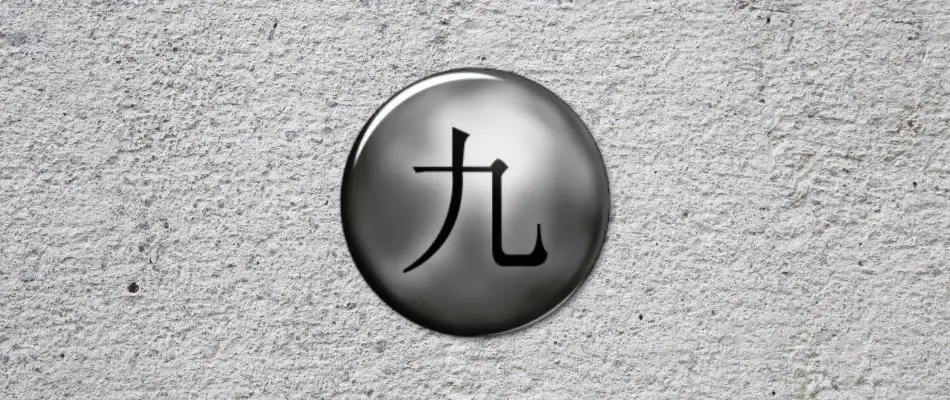
Very interesting article. Thank you
Glad you liked it. Hopefully it makes responding to corrections easier.
I have been trying to learn the intricacies of Tai Chi for the past ten years. Thanks to this article, you have added a great degree of clarity with regards to the esoteric side of the Internal Arts wisdom.I am elated as a child given a new object on a Christmas Morning!I am geographically isolated and have not encountered a master to learn from, but this vital info is a virtual life saver.
Hello Maury,
Thank you for your kind words. In a sense we are all isolated and there are enough references to training alone in the literature to fill another website. I know that it can be lonely and disheartening to be working alone but I have been assured that this is where the true epiphanies lie. I have the fortune of finding another person who is interested in working together. Yet we both practice on our own and check back in so that we are accountable and progressing. You can make great progress simply by practicing and checking back in with a near enough teacher or a workshop if one comes your way.
If you are new to the website I would suggest paging back through prior posts and seek essays that resonate with you. I really believe that we are lacking explanations of some of the fundamental messages of tai chi(in the west). It is not that the teachers are being stingy with what they teach us. I think that they appraise our abilities and give us information based on where we are at what we need as a next step. It is up to us to keep practicing so that the additional information keeps coming.
A practitioner can wrap their mind around a single truism like you apparently have and their progress can leap forward. This is my motivation in publishing these writings and comments and emails like yours keep me engaged so thank you. I have wanted to write a book on essential ideas from tai chi like “the importance of 9” that is style neutral so that can all progress. You remind me that I do need to make this a priority and begin within the coming year.
Someone also left a great explanation of the importance of 108 in the post titled: Tai chi and Buddhism – Limitations of Having a Teacher
This comment was originally shared by nero wolfe and republished here. Thanks nero wolfe!
There is 108 moves in Tai Chi Set.(1+0+8 = 9)
Here is a discussion of number 108.
Some say that 1 stands for God or higher Truth, 0 stands for emptiness or completeness in spiritual practice, and 8 stands for infinity or eternity.
108 represents the ultimate reality of the universe as being (seemingly paradoxically) simultaneously One, emptiness, and infinite.
In Hinduism:
Hindu deities have 108 names, while in Gaudiya Vaishnavism, there are 108 gopis of Vrindavan. Recital of these names, often accompanied by counting of 108-beaded Mala, is considered sacred and often done during religious ceremonies. The recital is called namajapa. Accordingly, a mala usually has beads for 108 repetitions of a mantra.
The distance of the Sun from the Earth divided by the diameter of the Sun and the distance of the Moon from the Earth divided by the diameter of the Moon is approximately equal to 108. It is claimed that the great sires of Vedanta knew this relationship and thus 108 is a very important number in Vedantic chantings.
108 Gopis {consorts} of Lord Krishna
108 Holy places for Vaishnavas
108 beads on the Japa maalaa {rosary}
108 Upanishads
108 Divyadeshes – Divine or Sacred Tirtha throughout India and Nepal
108 sacred water taps in Muktinath – Nepal
Martial Arts:
Many East Asian martial arts trace their roots back to Buddhism, specifically, to the Buddhist Shaolin Temple. Because of their ties to Buddhism, 108 has become an important symbolic number in a number of martial arts styles.
• According to Marma Adi and Ayurveda, there are 108 pressure points in the body, where consciousness and flesh intersect to give life to the living being.
• The Chinese school of martial arts agrees with the South Indian school of martial arts on the principle of 108 pressure points.
• 108 number also figures prominently in the symbolism associated with karate, particularly the Gōjū-ryū discipline. The ultimate Gōjū-ryū kata, Suparinpei, literally translates to 108. Suparinpei is the Chinese pronunciation of the number 108, while gojūshi of Gojūshiho is the Japanese pronunciation of the number 54. The other Gōjū-ryū kata, Sanseru (meaning “36”) and Seipai (“18”) are factors of the number 108.
• The 108 moves of the Yang Taijiquan long form and 108 moves in the Wing Chun wooden dummy form, taught by Yip Man, are noted in this regard.
• Paek Pal Ki Hyung, the 7th form taught in the art of Kuk Sool Won, translates literally to “108 technique” form. It is also frequently referred to as the “eliminate 108 torments” form. Each motion corresponds with one of the 108 Buddhist torments or defilements
And for math buffs:
One hundred eight (or nine dozen) is an abundant number and a semiperfect number. It is a tetranacci number.
It is the hyperfactorial of 3 since it is of the form
108 is a number that is divisible by the value of its φ function, which is 36.
108 is also divisible by the total number of its divisors (12), hence it is a refactorable number.
In Euclidean space, the interior angles of a regular pentagon measure 108 degrees each.
There are 108 free polyominoes of order 7.
In base 10, it is a Harshad number and a self number.
9 x 1 = 9
9 x 2 = 18 (8+1 = 9)
9 x 3 = 27 (7+2 = 9)
………
9 x 12 = 108 (1+0+8 = 9)
General.
The chakras are the intersections of energy lines, and there are said to be a total of 108 energy lines converging to form the heart chakra. One of them, sushumna leads to the crown chakra, and is said to be the path to Self-realization.
Some say there are 108 feelings, with 36 related to the past, 36 related to the present, and 36 related to the future.